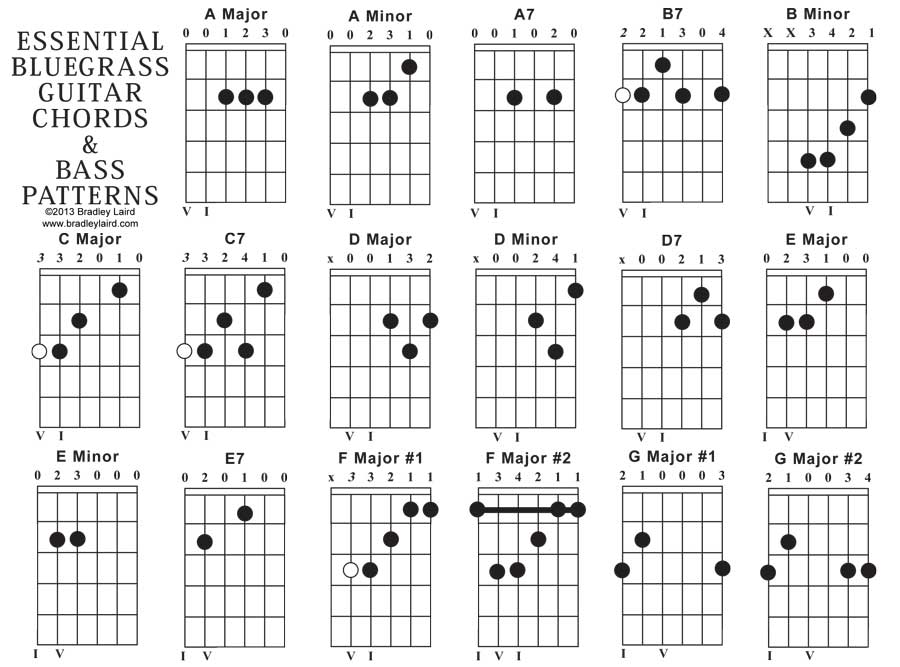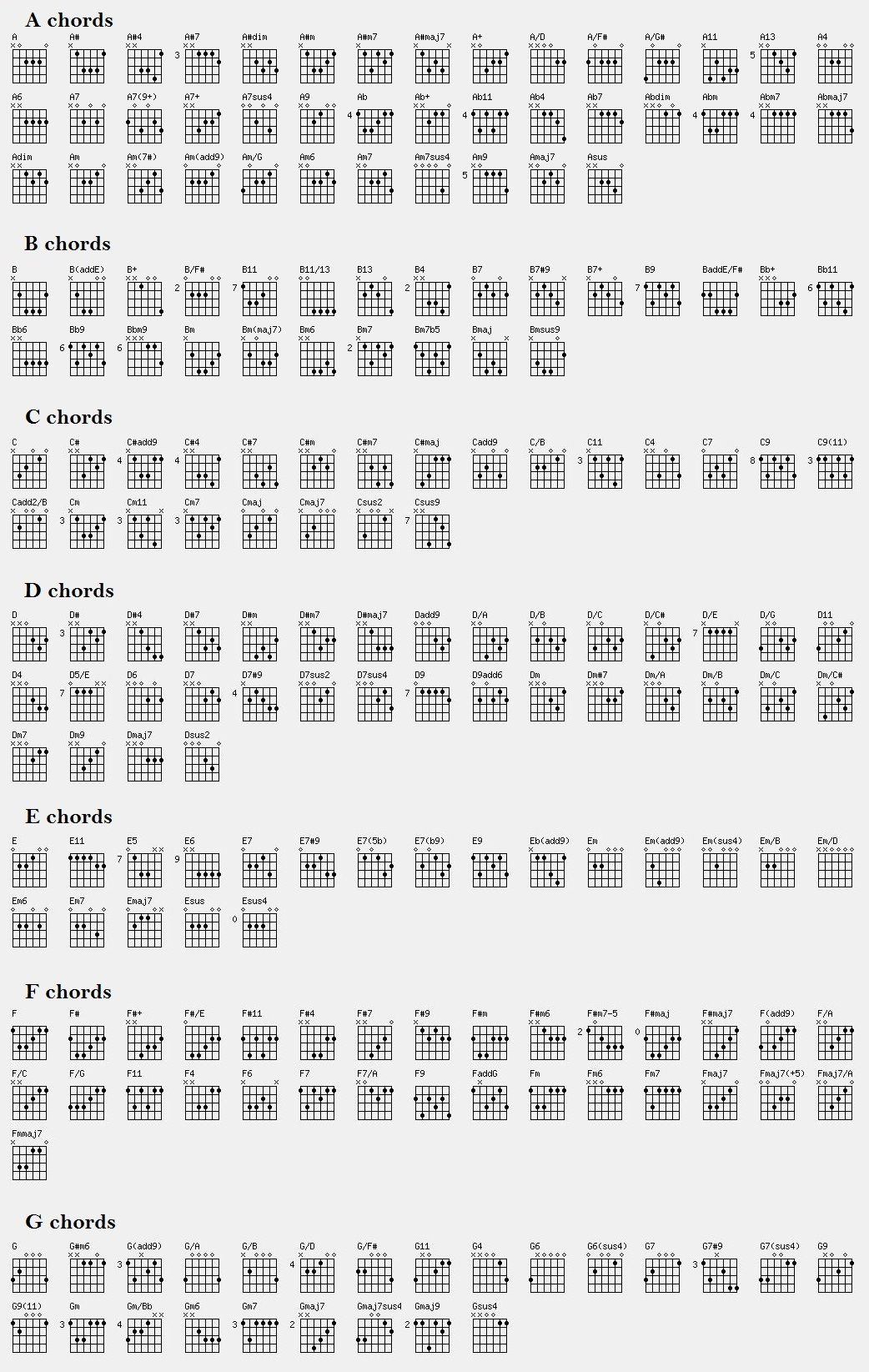

Guitar chords are one of the most important aspects of guitar playing. All guitar instruction at this site is completely free! The online guitar lessons here are aimed at beginning to intermediate guitar players and advanced guitarists who want to know a little more about guitar music theory.
#ALL CHORDS HOW TO#
You probably figured it out already, this web site is all about how to play guitar chords.
#ALL CHORDS FREE#
Try retuning your guitar to these then revisit some of the previous examples using the exact same fingerings, and see how the lower register affects the sound.Welcome to guitar chords magic, your free guide to guitar chords. Learning to switch back and forth to a different tuning will be just as easy (if not easier) than when you first learned to tune.

If you’re a little hesitant about retuning your guitar, keep in mind that you’ve already learned to tune it to standard. Some of the most common lowered tunings in metal are standard down a half-step, aka “Eb” (Eb–Ab–Db–Gb–Bb–Eb), standard down a whole-step, also called “D standard” (D–G–C–F–A–D) and drop-D down a whole-step (C–G–C–F–A–D), which is sometimes referred to as drop-C. Beginning guitarists are sometimes flummoxed by these alterations, but the overwhelming majority of the time they are just detuned versions of both standard and drop-D tunings, meaning everything you play in them will be fingered the same way, it will just be at a lower pitch. 3īy the mid ’90s, myriad variations of lowered tunings had become extremely commonplace in the metal universe. Once mastered, the four stem-rhythms can be connected together consecutively to create driving single-note riffs like the one in Ex. This will help you navigate complex rhythms with both speed and accuracy. It’s imperative that your picking-hand never stops an alternating motion.

For the second, third, and fourth patterns, continue the alternate picking-hand motion but “ghost” the missing stroke by simply not hitting the string. Play the first using a steady alternate picking-hand motion. The trick is to realize that there are only a finite number of ways to subdivide a beat and, once learned, these individual one-beat stems can be strung together in different combinations to create more complex patterns. Mastering the metric methods of bands like Slipknot, Gojira, and Lamb of God may seem daunting. Now that's spice.Īs metal progressed into the new millennium, it branched off into various subgenres, many of which relied on a fusillade of rapid-fire 16th-note riffs played at breakneck tempos. For example, when you let the 2nd string ring open on a C chord, it becomes a Cmaj7, but when you let the same string ring open on an Fmaj7 chord it becomes the much more sophisticated Fmaj7#4. This second concept is particularly interesting because even though we keep moving the same notes on the 2nd string against the first three chords, the quality of these chords keeps changing. This example demonstrates two basic concepts: The first is that you can add color to the most basic chords, in this case C–Am–F–G, by moving, removing, or adding a finger to each voicing. But the aforementioned songwriters knew that to make the everyday unique, you need to add some spice. In fact, the reason we hear it so frequently is because it sounds good, and it has been used masterfully by everyone from George Gershwin to the Rolling Stones and the Police. Now there's nothing wrong with the progression itself. These days it seems like every other hit song features the prosaic I–VIm–IV–V progression.


 0 kommentar(er)
0 kommentar(er)
